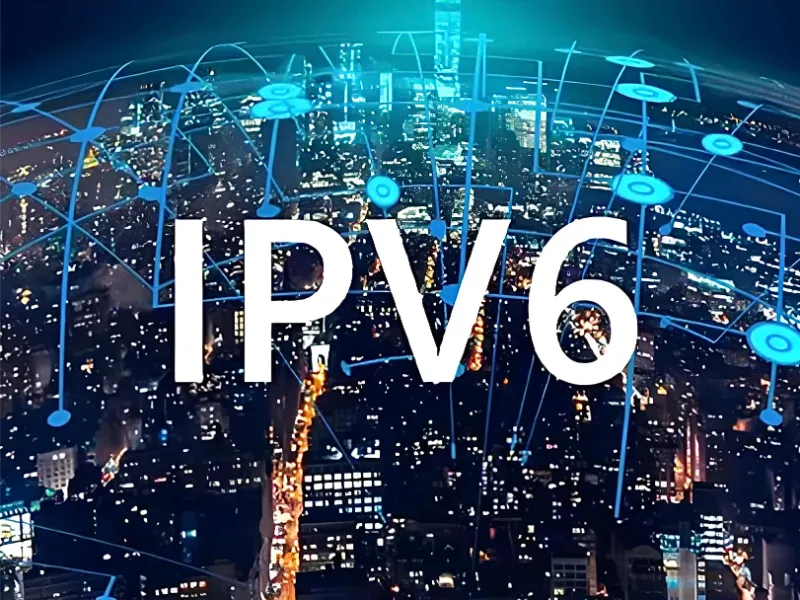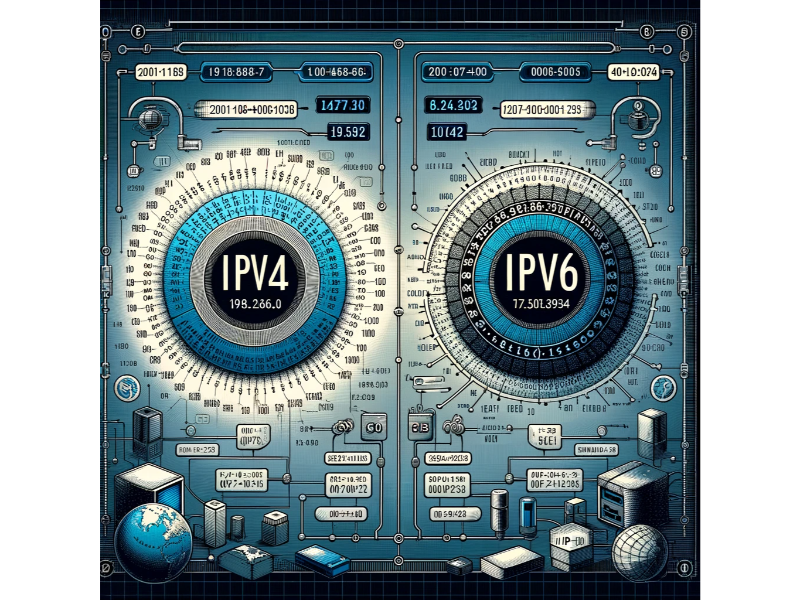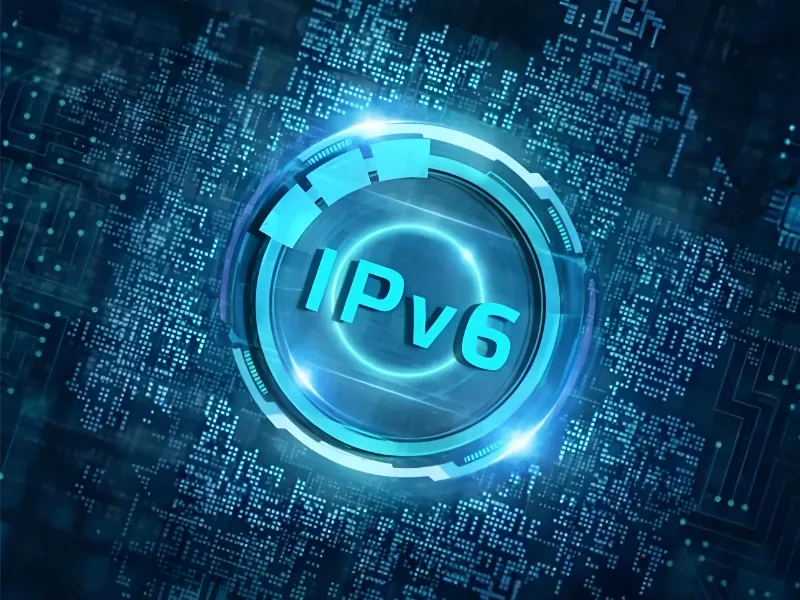- IPv6 overcomes IPv4’s address limitations, offering 340 undecillion unique addresses.
- Its features, including enhanced security and scalability, are shaping the future of IoT and 5G connectivity.
The internet’s backbone lies in its protocols, and IPv6 emerges as a groundbreaking evolution addressing the shortcomings of IPv4. With the exponential growth of devices and interconnected technologies, the need for an advanced, scalable, and secure protocol became paramount. This article delves into the intricacies of IPv6, its transformative features, and its pivotal role in modern internet infrastructure.
What is IPv6?
IPv6 (Internet Protocol version 6) is the latest iteration of the Internet Protocol, designed to address the limitations of its predecessor, IPv4. While IPv4 has a 32-bit address system, which provides around 4.3 billion unique IP addresses, this number is insufficient to meet the growing demand for devices and online services. IPv6 uses a 128-bit address system, providing an almost unlimited number of addresses—340 undecillion to be exact.
One of the key features of IPv6 is its expanded address space, which allows each device, from smartphones to IoT devices, to have its own unique address. This is crucial as the internet continues to grow, with billions of devices needing to connect. Additionally, IPv6 incorporates several improvements over IPv4, such as better security through mandatory IPsec support, enhanced routing efficiency, and simplified network configuration.
IPv6 also supports advanced technologies like the Internet of Things (IoT), 5G networks, and large-scale cloud computing services. As more and more organizations and governments begin to adopt IPv6, it will play a central role in the continued development of the internet. The transition from IPv4 to IPv6, however, has been gradual, with both protocols running in parallel in many areas as businesses and infrastructure catch up with the shift to IPv6.

Why IPv6 matters?
The transition to IPv6 is more than just a technological upgrade—it is a necessity for sustaining global connectivity. Key advantages include:
- Larger Address Space: Accommodates growing device demands and eliminates the need for Network Address Translation (NAT).
- Simplified Network Configuration: Stateless Address Autoconfiguration (SLAAC) enables devices to self-configure without manual intervention.
- Enhanced Security: Built-in support for IPsec ensures encrypted communication and robust authentication.
- Optimized Routing: Streamlined headers reduce latency and improve performance.

Also read: Is IPv6 essential? APNIC’s chief scientist questions the shift
IPv4 vs. IPv6: Key differences
While IPv4 laid the groundwork for internet connectivity, IPv6 redefines possibilities. Here’s a breakdown of major differences:
- Address Space: IPv4 supports 4.3 billion addresses, while IPv6 offers 340 undecillion.
- Header Structure: IPv6 simplifies packet headers, boosting efficiency.
- Security: IPv6 integrates IPsec natively, whereas IPv4 requires additional configurations.
- Compatibility: IPv6 supports advanced technologies like IoT and mobile 5G.

Also read: IPv4 vs. IPv6: What’s the difference between the two protocols?
Features of IPv6 that enhance connectivity
- 128-bit Addressing
IPv6’s expanded addressing system allows each device on the planet to have a unique address, eliminating the limitations of NAT in IPv4. - Built-in Security
With mandatory IPsec implementation, IPv6 provides end-to-end encryption and data integrity. - Auto-Configuration
SLAAC simplifies the process of adding devices to networks, an essential feature for IoT environments. - Better Support for Multicasting
IPv6 improves multicasting, enabling efficient data delivery to multiple destinations simultaneously.
Also read: Advantages and application scenarios of IPv6
The role of IPv6 in IoT evolution
The Internet of Things (IoT) revolution thrives on IPv6’s vast address pool and simplified networking. Smart cities, homes, and industries rely on this protocol for seamless interconnectivity. IPv6 enables real-time data sharing and efficient resource management, integral to applications like smart grids and connected vehicles.
Example in Action:
Smart grids use IPv6 to facilitate real-time communication between millions of sensors, ensuring efficient energy distribution.
Also read: How to get an APNIC IPv6 address?
Transition challenges: Moving from IPv4 to IPv6
Despite its benefits, IPv6 adoption faces hurdles:
- Compatibility: Many legacy systems are built around IPv4 and require significant updates.
- Cost: Transitioning infrastructure to support IPv6 can be expensive.
- Awareness: Organizations often lack knowledge about the advantages of IPv6.
The transition to IPv6 is not just a technical upgrade; it’s a necessity for the evolving demands of IoT, 5G, and global connectivity.
John Curran, President and CEO of the American Registry for Internet Numbers (ARIN)
The future of IPv6 adoption
As more nations and organizations adopt IPv6, the protocol’s role will expand in critical areas like:
- 5G Networks: IPv6 supports the scalability and speed requirements of next-gen mobile networks.
- Cloud Computing: Enhanced security and addressability make IPv6 ideal for cloud services.
- Cybersecurity: The integration of IPsec helps combat threats in an increasingly connected world.
IPv6 is not just a protocol upgrade; it’s the foundation of tomorrow’s internet.
Alex Morgan, CTO of a leading network solutions provider
Also read: IPv6—The big shift no one’s rushing into
IPv6’s role in shaping the internet’s future
IPv6 plays a crucial role in shaping the internet’s future by addressing the limitations of IPv4, particularly its limited address space. As the internet continues to expand, with more devices and technologies connecting daily, IPv6’s vast address pool ensures that every device can have a unique IP address. This supports the growing demands of the Internet of Things (IoT), 5G networks, and smart cities. Furthermore, IPv6’s enhanced security, efficient routing, and scalability make it indispensable for next-gen applications, enabling a more secure, efficient, and connected digital world.
IPv6 is the sixth version of the Internet Protocol, designed to replace IPv4. It provides a vastly larger address space and integrates features like security and auto-configuration, making it suitable for modern internet demands.
IPv6 solves the address exhaustion issue of IPv4, supports IoT, improves security with built-in IPsec, and simplifies network configurations, ensuring future scalability and efficiency.
Key differences include a larger address space (128-bit for IPv6 vs. 32-bit for IPv4), built-in security features, simpler packet headers, and support for auto-configuration and advanced technologies.
Challenges include compatibility with legacy systems, high transition costs, and a lack of awareness among organizations about its benefits.
IPv6 enables IoT devices to have unique addresses, facilitating seamless communication and scalability in smart systems like cities, homes, and industries.

